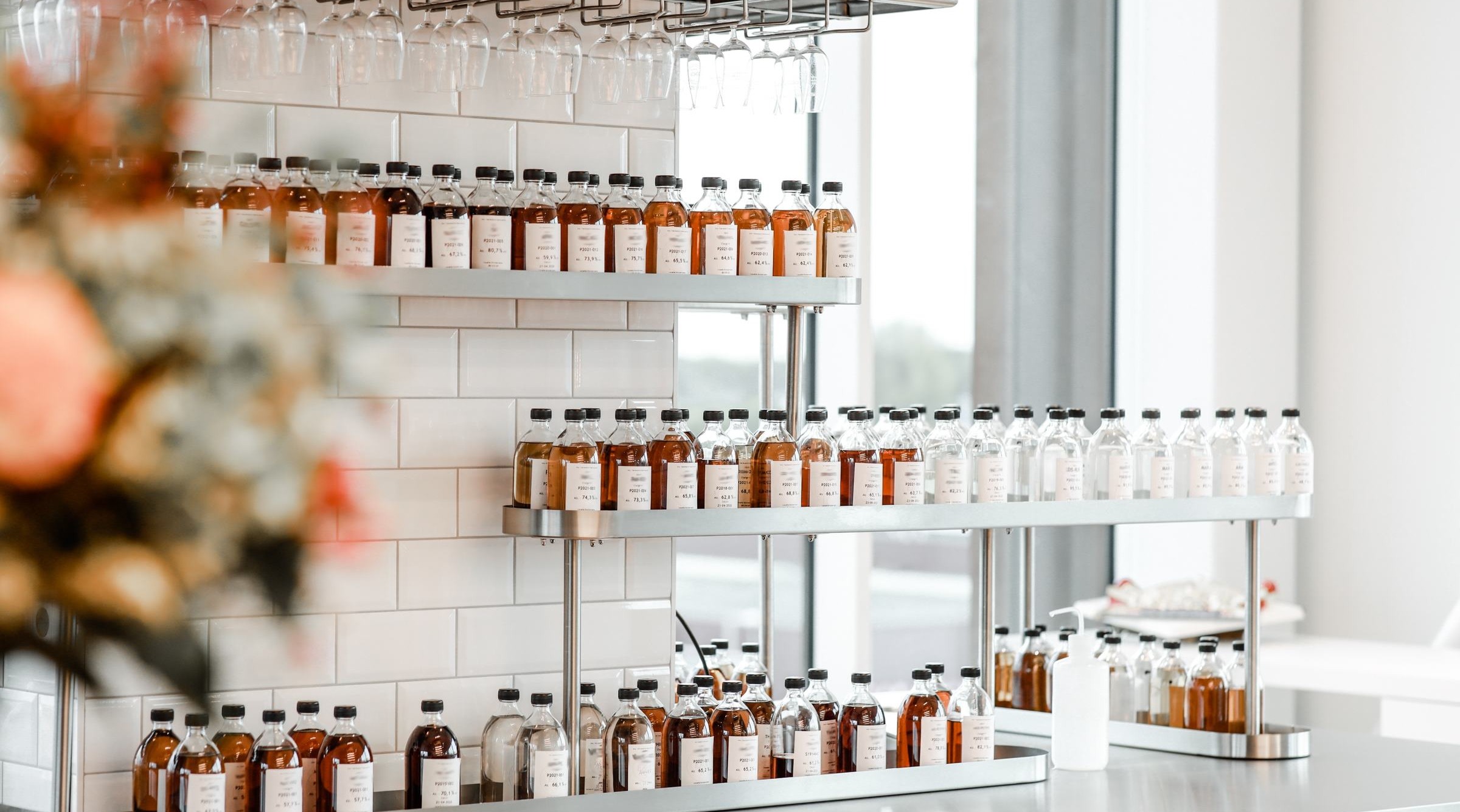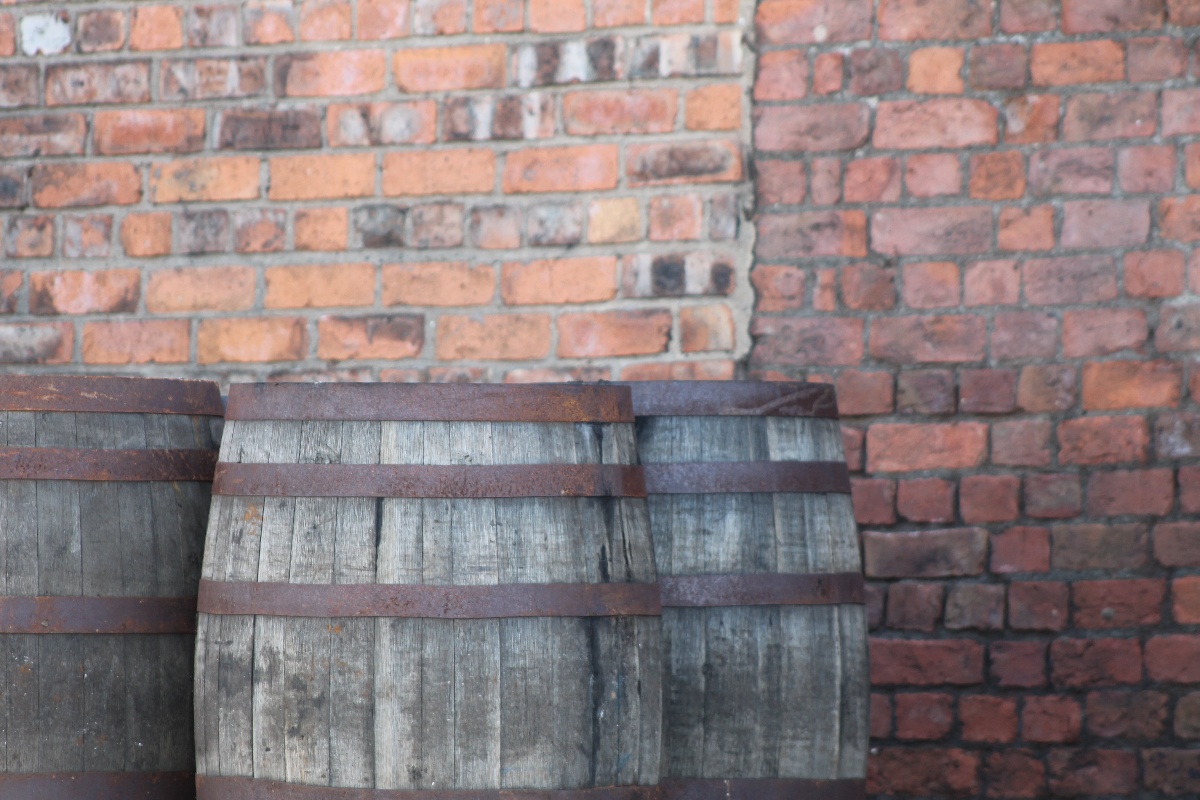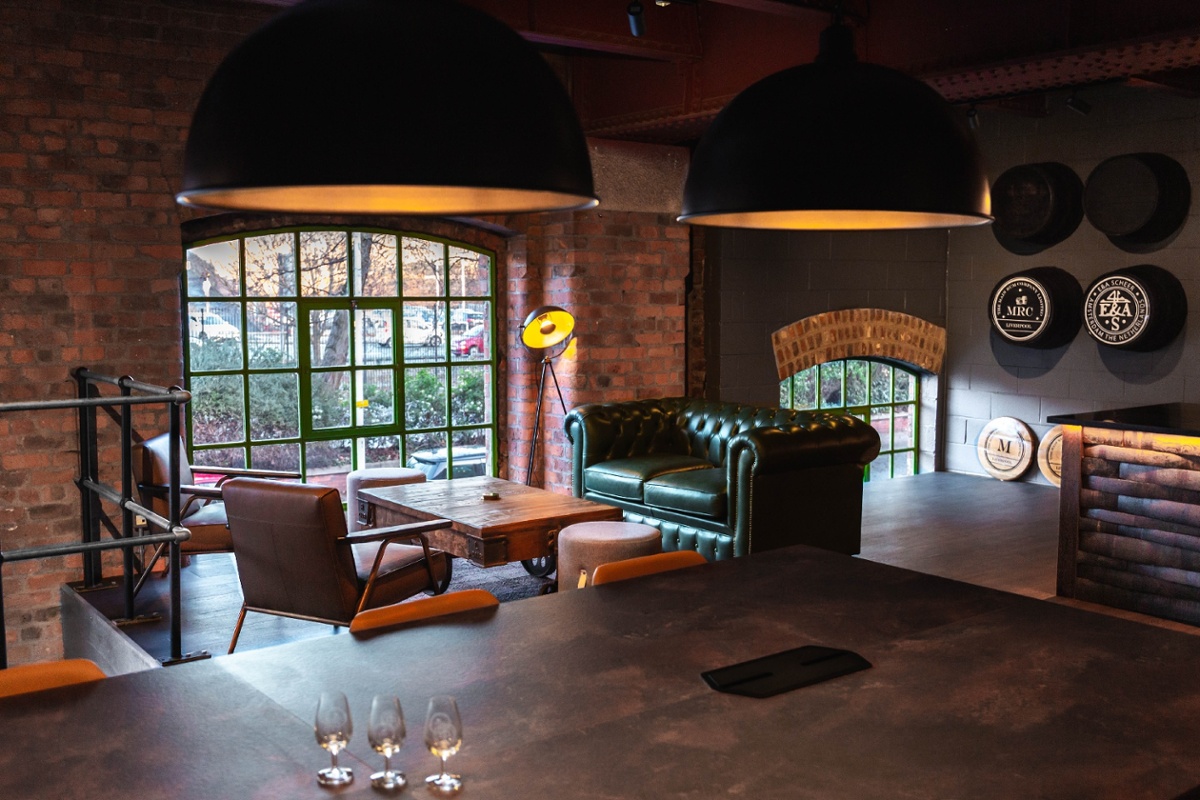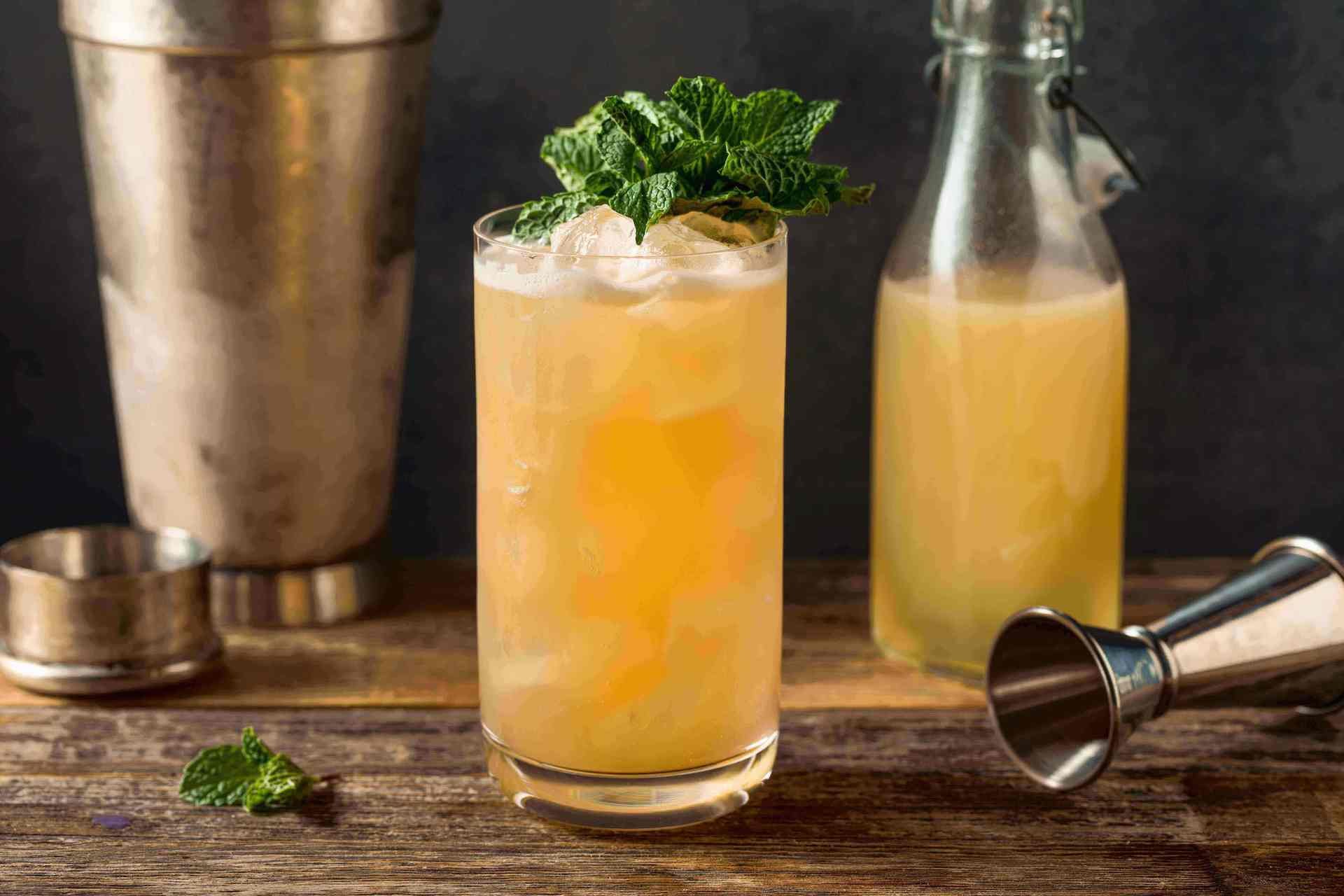Types of Rum

What is Rum?
Rum is a distilled alcoholic beverage made from fermented sugarcane juice, sugarcane syrup, or molasses - a byproduct of sugar production. It’s a versatile drink produced worldwide, with each region having their own tradition and methods of production.
Where did Rum originate from?
The question of Rum’s origins remains debated among scholars and Rum enthusiasts. Several theories have been proposed to explain Rum’s emergence, but it is generally accepted that Rum production originated on the Caribbean islands in the 17th century.
How is Rum made?
Rum’s main ingredients are sugarcane-based, such as cane juice, syrup, or molasses. Cane juice is extracted from the sugarcane, while the syrup and molasses are created during and after the cane sugar production process. These base ingredients are then fermented by adding yeast to create a “wash,” a liquid containing alcohol and other impurities.
This wash will undergo a distillation process, through which the desired alcohol is separated from other unwanted compounds. From there, the distilled alcohol can be used directly. In the case of aged Rum, the distillate is stored in wooden casks for a certain period of time to enhance the flavour. It can be blended with other Rum types to achieve the desired profile.
Read more about how Rum is made
Types of Rum
Rum is a diverse spirit with many different styles. Due to the possibilities that Rum blending offers, the number of different Rums worldwide is almost impossible to quantify. Here is a list of some of the most common types and commonly used names of Rum you might come across.
White Rum / Light Rum
White Rum, often also called silver or light Rum, is known for its clear appearance. It can be produced from molasses or sugarcane juice. Some white Rums are unaged, while others can be aged for several years before being decolorised through charcoal filtration. As a result, white Rum can vary in flavour and strength. White Rum often serves as a base spirit in a wide range of cocktails and mixed drinks, such as Mojito, Daiquiri, Piña Colada, or Rum Punch.
Gold Rum
Gold Rums can come in a variety of hues, ranging from light bronze to amber. It is worth noting that the colour of gold Rum does not necessarily reflect its age. Some Rums, even those not aged, may have caramel added to achieve their golden appearance. This is an accepted addition for standardising the colour of Rums. On the other hand, premium aged Rums may appear light in colour due to the absence of added colouring agents.
Like white Rum, gold Rums have many different flavour profiles due to different production methods. Gold Rum's versatility extends beyond sipping and mixing—it's also a popular choice for cooking and baking. Its flavour profile can add depth and richness to various dishes, including desserts like Rum cakes and sauces for savoury dishes.
Dark Rum or Black Rum
Next to gold Rum, there are dark and black Rum, which are interchangeable terms for Rums that are darker in colour. Most dark Rums have a deep brown colour, and some can even be nearly opaque. Dark Rum can be enjoyed neat or on the rocks, allowing connoisseurs to savour its nuanced flavours and aromas.
Black Rum is characterised by its deep, almost opaque colour. It can have molasses or caramel added, and it doesn’t always undergo lengthy ageing. Black Rum enjoys popularity in various regions around the world. It is also a key ingredient, for instance, in the famous cocktail called “Dark ‘N Stormy”.
Overproof Rum
Overproof Rums contain a higher alcohol content than standard Rums. A “proof” is a unit of measurement for alcoholic strength used by the US. One proof is double the ABV, so 80 proof means 40% vol.
While there isn't a strict definition for what constitutes "overproof", it typically refers to Rums with an alcohol by volume (ABV) higher than the customary 40%, sometimes hitting ‘cask strength’ of 60-70%. The term "overproof" originates from the practice of proving the spirit's strength by testing its flammability with gunpowder—a spirit that was "proof" would ignite the gunpowder when lit. This is achieved once a spirit is 57% or above, demonstrating the quality of black powder.
Navy Rum
Navy Rum gets its name as it’s made to resemble Rum in the old British Royal Navy. It originated when Rum was issued as a daily ration to seamen.
Navy Rum was valued not only for its ability to lift spirits but also for its practicality; it served as a means to preserve drinking water on long voyages, as the alcohol content inhibited the growth of bacteria.
Single cask Rum

The Main Rum Company - Single Cask
Single cask Rum refers to Rum that has been aged in a single barrel or cask rather than being blended with Rums from multiple barrels. Because single cask Rum is not blended, it often showcases the unique characteristics of the particular barrel in which it was aged. This can result in a more complex and distinctive flavour profile than blended Rum.
Rum enthusiasts often prize single-cask Rums for their individuality and the opportunity to experience the nuances of different ageing processes and barrel types.
XO Rum
The "XO" designation typically indicates that the Rum has been aged for an extended period, although there isn't a strict regulation on the exact ageing requirements, such as in Cognac. In general, XO rums are aged for a minimum of 6 years.
Solera system or Solera
Solera, or system Solera, is an ageing system often used by Spanish-style producers, which originates from the Sherry industry, where this is a common practice technique for producing different types of sherry. To produce Rums with the Solera technique, Rums of various ages are layered in a series of casks, with a small amount periodically removed and bottled. This removed Rum is replaced with younger Rum, creating a blend where the youngest spirit mingles with older, more mature Rum. Over time, this process builds complexity in the final product, resulting in a Rum with characteristics of both young and aged spirits.
Flavoured and Spiced Rum
Flavoured and spiced Rum are distinct categories of Rum that have been infused with additional flavours and spices to enhance their taste profiles. Flavoured Rums can be infused with fruit extracts to impart a specific essence to the spirit. Spiced Rum can contain tasting notes that impart warm, spicy and aromatic flavours to the Rum.
In recent years, flavoured and spiced Rum has become one of the growth drivers in the Rum market. The rise of the cocktail culture and evolving customer tastes led to increased innovation in the Rum industry. Some Rum producers infuse unique flavours and spices to make their products unique and appeal to a larger customer base.
Rhum Agricole
Rhum Agricole (rhum blanc or rhum brut) is a distinct style of Rum originating from the French Caribbean islands, particularly Martinique, Guadeloupe, and Marie-Galante. It is protected as a French AOC (protected denomination of origin) on the island of Martinique.
What sets Rhum Agricole apart from other types of Rum is its production method, which involves fermenting and distilling fresh sugarcane juice rather than molasses and distillation in traditional ‘Creole’ column stills. This process can give Rhum Agricole a crisp and grassy flavour profile, quite different from that of molasses Rums.
This French rhum is typically distilled to a higher proof than other Rums, retaining more of the sugarcane's natural flavours and aromas. It's appreciated for its taste, as well as its historical and cultural significance in the French Caribbean, such as in Martinique and Guadeloupe
Cachaça
Cachaça is a Brazilian distillate made from freshly pressed sugarcane juice, like Rhum Agricole, rather than sugarcane syrup or molasses. Cachaça also has a Geography Indication, which means it must strictly be produced in Brazil. Cachaça can also be classified as Brazilian Rum.
Cachaça is often compared to Rum, but it has distinct characteristics that set it apart. Cachaça is closely associated with Brazilian culture, particularly in creating the iconic Caipirinha cocktail.
Batavia Arrack
Batavia Arrack, one of the oldest distilled spirits, is uniquely crafted from sugar cane molasses on the island of Java, Indonesia. “Arrack” or “Arak” are words that describe distilled alcoholic drinks in many regions. However, these are mostly different and should not be confused with Batavia Arrack due to the difference in raw materials. What distinguishes Batavia Arrack from other varieties of Rum is the use of sugarcane molasses and the incorporation of some local red rice in the fermentation process, particularly to help the yeast.

"Batavia Arak" was the first Rum type in our portfolio.
Batavia Arrack has a rich and storied history. Today, Batavia Arrack continues to be produced in Indonesia, maintaining its traditional methods while also gaining recognition among enthusiasts and mixologists worldwide for its unique flavour profile rooted in centuries of history.
Colour and age
A common misconception is that the darker the Rum, the more aged it is. In fact, the colour of the distillate can be influenced by many other factors. In a broader sense, this applies to all spirits, as colour is not always a reliable indicator of age and taste. Rum colour can result from many factors. These can include the barrel used in ageing, the climates in which the Rum was aged, and sometimes also due to an additive such as caramel.
The type of barrels used for ageing plays a significant role in shaping the colour of Rum. While many Rum are aged in charred oak barrels, which impart a darker tone to the spirit, other factors, such as the previous contents of the barrels and the level of char, can also influence the final colour of the Rum. For example, ex-bourbon casks or ex-sherry casks may impart additional flavours and colours to the Rum, resulting in variations in hue and tone.
Additionally, it is common for Rums to acquire their colour through the blending process. Many Rums consist of blends of various varieties/profiles that can be aged for varying time periods, all aimed at maintaining a consistent flavour profile and quality across different batches. Furthermore, a Rum can undergo filtration to eliminate specific pigments.
The fascinating world of Rum
Rum is available in a wide range of varieties from different regions around the world. Whether it's Jamaican Rum, Spanish-style Rum, or Latin Rum, each type offers a unique taste profile. Undoubtedly, Rum is a well-loved beverage with a fascinating history, cherished by individuals worldwide. Its versatility shines through in Rum cocktails, confectionery, and various flavour and fragrance creations.

Rum blending facility at E&A Scheer
Frequently asked questions about different types of Rum
What are the three main types of Rum?
Generally speaking, the three main types of Rum are light, heavy, and aged Rum. For more information, read through our dedicated explanation page.
What types of Rum does E&A Scheer supply?
E&A Scheer supplies all types of Rum in bulk and can develop Rum blends according to your specifications. We specialise in sourcing Rum from around the world, including rare and aged Rum. Our Master Blenders will create distinctive Rum blends that cater to your needs with consistent quality and supply. Whether you’re looking for light Rum, dark Rum, light-bodied, heavy-bodied, or anything in between, E&A Scheer is here to help you with your Rum needs.
What is the difference between Rum and Rhum?
Rum and Rhum both refer to Rum, the sugarcane-based alcoholic beverage. Rhum is the French word for Rum. Rum is also sometimes referred to as “Ron” or “Rom” in Spanish-speaking countries.




Here to support your business
Our Rum specialists are here and happy to discuss how we can support your business, from creating a bespoke blend to consistently supplying it in bulk over the long-term.



